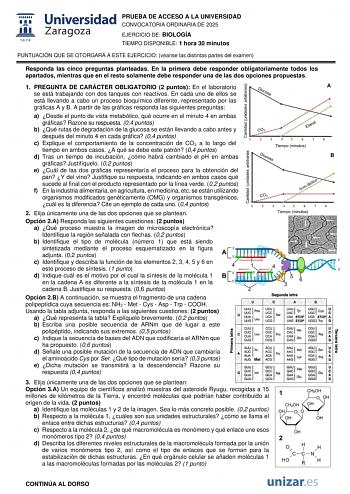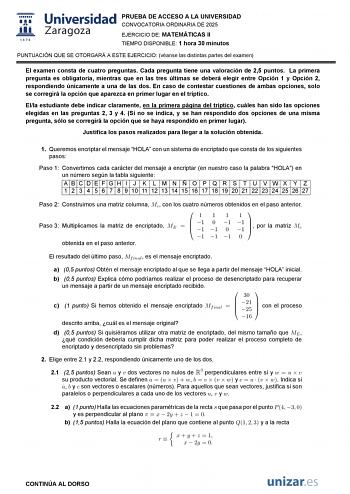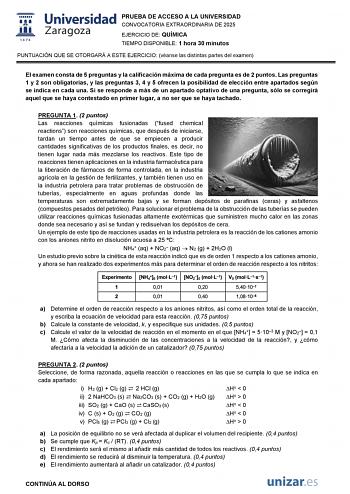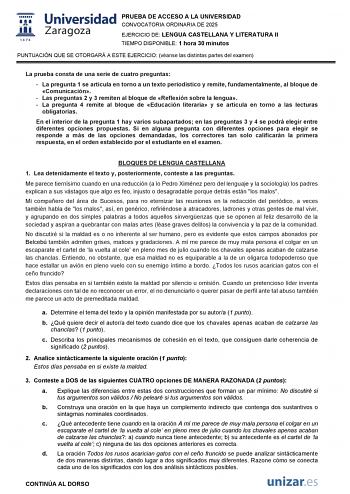Examen de Inglés de Aragón (EvAU de 2025)
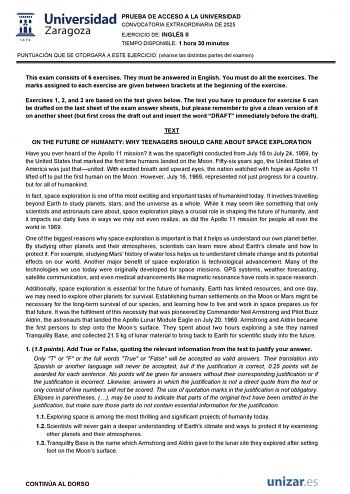
| Comunidad Autónoma | Aragón |
|---|---|
| Asignatura | Inglés |
| Convocatoria | Extraordinaria de 2025 |
| Fase | Acceso |
Temas mencionados new_releases

Apollo 11
Apollo 11 (July 16–24, 1969) was the American spaceflight that first landed humans on the Moon. Commander Neil Armstrong and Lunar Module Pilot Buzz Aldrin landed the Apollo Lunar Module Eagle on July 20, 1969, at 20:17 UTC, and Armstrong became the first person to step onto the Moon's surface six hours and 39 minutes later, on July 21 at 02:56 UTC. Aldrin joined him 19 minutes later, and they spent about two and a quarter hours together exploring the site they had named Tranquility Base upon landing. Armstrong and Aldrin collected of lunar material to bring back to Earth as pilot Michael Collins flew the Command Module Columbia in lunar orbit, and were on the Moon's surface for 21 hours, 36 minutes before lifting off to rejoin Columbia.
Fuente: wikipedia.org
Tranquility Base
Tranquility Base is the site on the Moon where, in July 1969, humans landed and walked on a celestial body other than Earth for the first time. On July 20, 1969, Apollo 11 crewmembers Neil Armstrong and Buzz Aldrin landed their Apollo Lunar Module Eagle at approximately 20:17:40 UTC. Armstrong exited the spacecraft six hours and 39 minutes after touchdown, followed 19 minutes later by Aldrin. The astronauts spent two hours and 31 minutes examining and photographing the lunar surface, setting up several scientific experiment packages, and collecting of dirt and rock samples for return to Earth. They lifted off the surface on July 21 at 17:54 UTC.
Fuente: wikipedia.org
Isaac Newton
Sir Isaac Newton (25 December 1642 – 20 March 1726/27) was an English polymath active as a mathematician, physicist, astronomer, alchemist, theologian, and author who was described in his time as a natural philosopher. He was a key figure in the Scientific Revolution and the Enlightenment that followed. His pioneering book (Mathematical Principles of Natural Philosophy), first published in 1687, consolidated many previous results and established classical mechanics. Newton also made seminal contributions to optics, and shares credit with German mathematician Gottfried Wilhelm Leibniz for developing infinitesimal calculus, though he developed calculus years before Leibniz. He is considered one of the greatest and most influential scientists in history.
Fuente: wikipedia.orgNASA
The National Aeronautics and Space Administration (NASA) is an independent agency of the executive branch of the United States federal government responsible for the civilian space program as well as aeronautics and aerospace research.
Fuente: wikipedia.orgHypernymy and hyponymy
Hypernymy and hyponymy are the between a generic term (hypernym) and a specific instance of it (hyponym). The hypernym is also called a supertype, umbrella term, or blanket term. The hyponym is a subtype of the hypernym. The semantic field of the hyponym is included within that of the hypernym. For example, pigeon, crow, and hen are all hyponyms of bird and animal; bird and animal are both hypernyms of pigeon, crow, and hen.
Fuente: wikipedia.org
Benefits of space exploration
As the space race came to an end, a new rationale for investment in space exploration emerged, focused on the pragmatic use of space for improving life on Earth. As the justification for government-funded space programs shifted to "the public good", space agencies began to articulate and measure the wider socio-economic benefits that might derive from their activities, including both the direct and indirect (or less obvious) benefits of space exploration. However, such programs have also been criticized with several drawbacks cited.
Fuente: wikipedia.org
Lunar Module Eagle
Lunar Module Eagle (LM-5) is the spacecraft that served as the crewed lunar lander of Apollo 11, which was the first mission to land humans on the Moon. It was named after the bald eagle, which was featured prominently on . It flew from Earth to lunar orbit on the command module Columbia, and then was flown to the Moon on July 20, 1969, by astronaut Neil Armstrong with navigational assistance from Buzz Aldrin. Eagles landing created Tranquility Base, named by Armstrong and Aldrin and first announced upon the module's touchdown.
Fuente: wikipedia.org